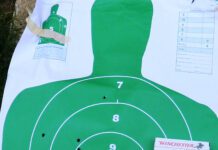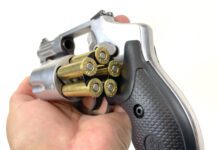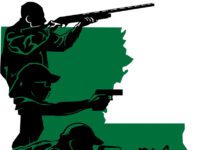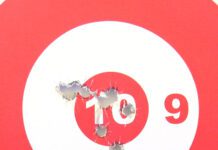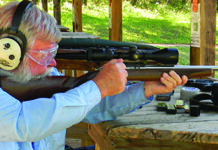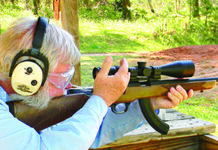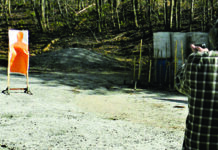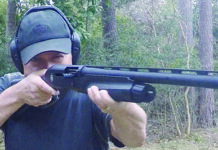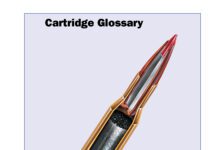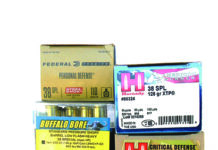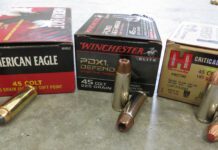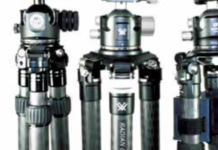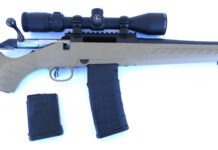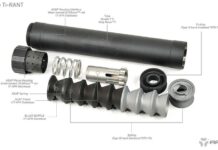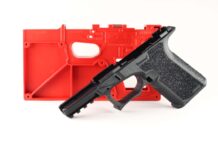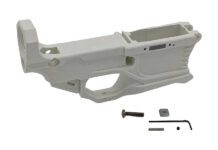Videos on GunReports.com!
(GunReports.com) -- New GunReports.com Videos: 1: GunReports.com's Kevin Winkle gets the lowdown on Steiner's 2011 glass offerings. 2: Learn how to install the Blackhawk SpecOps Recoil Reducing Adjustable Shotgun Buttstock and forend. 3: Sig Arms Academy Director of Training and USAR Team shooting coach George Harris talks about competition shooting. What good is competition? Competition puts stress on you and teaches you how to use stress to your advantage.
Gun News from Around the Web: Mar 21-27, 2011
GunReports.com aggregates important gun news of the week. Bookmark this page to check back often for new items added weekly, daily, or hourly, or on your Facebook page, search for 'GunReports.com' and click 'Like' to get the newsfeed pushed to your computer, tablet, or mobile device.
Videos on GunReports.com!
(GunReports.com) -- New GunReports.com Videos: 1: Sig Arms Academy Director of Training and USAR Team shooting coach George Harris talks about competition shooting. What good is competition? Competition puts stress on you and teaches you how to use stress to your advantage. 2: NSSF's Ryan Cleckner explains the measurement term 'minute of angle' (MOA) and how to use MOA adjustments on your scope for sighting in and to compensate for bullet drop at varying distances. 3: Ruger's Beginner's Guide to Shooting Competitions series takes you through a variety of matches to help you find an event that's right for you. In this episode we take a close look at the biathlon rifle and how it is specialized to this specific sport. US Ski Team member Annelies Cook tells you why the biathlon rifle is so very different than anything else on the market.
Videos on GunReports.com!
(GunReports.com) -- New GunReports.com Videos: 1: Kevin Winkle of GunReports.com reports from SHOT Show 2011 in Las Vegas on the S&W MP22 handgun. This pistol is a joint project between Smith & Wesson and Walther, and is made in Germany. 2: Small arms instructor and AMU reserve shooting team member SFC Chris Hansen discusses trigger control and how to improve it. He says that shooters tend to ‘get hard’ on the trigger, or jerk it. The drill he discusses will improve trigger control without having to shoot the rifle. 3: The National Shooting Sports Foundation's 'Introduction to Range Safety and Etiquette' is an 8 minute video that rules of gun safety, eye and ear protection, range rules, and more.
Gun News from Around the Web: Feb 28, 2011
GunReports.com aggregates important gun news of the week. Bookmark this page to check back often for new items added weekly, daily, or hourly, or on your Facebook page, search for 'GunReports.com' and click 'Like' to get the newsfeed pushed to your computer, tablet, or mobile device.
NRA-ILA List: National Anti-Gun Organizations, Celebrities, Businesses, and Journalists
(GunReports.com) -- The following list, compiled by the NRA Institute for Legislative Action, documents which organizations have lent monetary, grassroots or some other type of direct support to anti-gun organizations. In many instances, these organizations lent their name in support of specific campaigns to pass anti-gun legislation such as the March 1995 HCI 'Campaign to Protect Sane Gun Laws.' Many of these organizations were listed as 'Campaign Partners,' for having pledged to fight any efforts to repeal the Brady Act and the Clinton 'assault weapons' ban. All have officially endorsed anti-gun positions.
Videos on GunReports.com!
(GunReports.com) -- New GunReports.com Videos: 1: Reservist John Buol Jr., editor of American Gunsmith magazine, introduces the A drill useful for handgun shooting, the Bullet Hole drill is explained by MSG George Harris. Get 3 yards away, shoot once on a blank target, use that as our aiming area. If you use the front sight on top of that hole, the shots should either group on the shot, or if the sight isn't zeroed, group together off the hole. 2: GunReports.com's Kevin Winkle interview's S&W's Jerry Miculek on coming introductions to the Performance Center line. The new AR barrel has a melonite finish on the inside, so the barrel life is almost 4X the standard AR. 3: Here's a pistol drill from Viking Tactics. The Reload Drill will be part of Viking's Pistol DVD 1.
DIY Gun Blueing from Birchwood Casey
(GunReports.com) -- Presto Mag Gun Blue from Birchwood Casey is a special cold blue formulation that works well on all types of carbon steel to provide a deep blue luster to metal finishes.
Top Hunting and Shooting Equipment Brands for 2010
(GunReports.com) — Southwick Associates has announced the brands hunters and shooters purchased most frequently in 2010. This list has been compiled from the 41,923 internet-based surveys completed by hunters and target shooters who volunteered to participate last year in HunterSurvey.com and ShooterSurvey.com polls.
Videos on GunReports.com!
(GunReports.com) -- New GunReports.com Videos: 1: Reservist John Buol Jr., editor of American Gunsmith magazine, introduces the ACOG TAO1 battle sight, and how to use it in the field. USAMU Reserve Combat Shooting Team MSG Lance Espinosa shows how he maintains data on this sight to maintain its effectiveness. 2: Kevin Winkle of GunReports.com gets the lowdown on introductions that Crimson Trace is making in 2011 handguns. Sig, S&W, Ruger, and others. Talks about G10 custom grip lasers, infrared lasers (sadly, military only), and a buncha other cool stuff. 3: GunReport.com's Kevin Winkle handles the Glock 17 25th anniversary model in this Product Minute.
Gun News from Around the Web: Feb 21, 2011
GunReports.com aggregates important gun news of the week. Bookmark this page to check back often for new items added weekly, daily, or hourly, or on your Facebook page, search for 'GunReports.com' and click 'Like' to get the newsfeed pushed to your computer, tablet, or mobile device.
Crimson Trace Announces Master Series Lasergrips for the 1911
(GunReports.com) -- Crimson Trace has produced an integrated grip-activated laser in a range of high-end stock materials, such as G10 and stabilized laminated wood.


